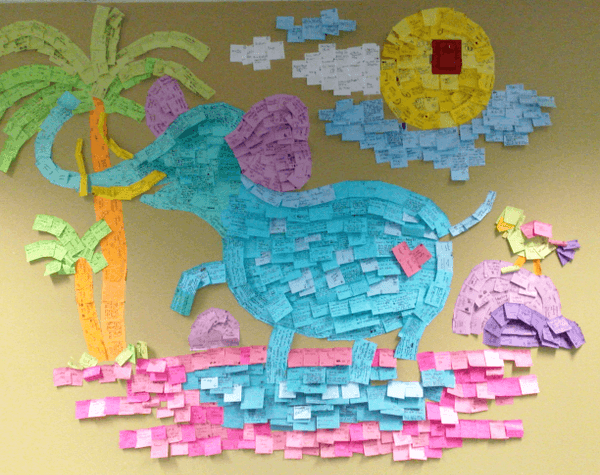Blog
Why Isn't My Kanban Working?19 Aug 2015

Over, beyond and nowhere near the WIP limits
As you're probably aware, there are 2 main principles to implementing Kanban - workflow visualization and limiting the work-in-progress. The best lesson for anyone who might be interested in improving their processes with Kanban is that the two basic rules are equally important. So, for as long as you've made the team use a Kanban board, you need to make sure that they are also applying the WIP limits. Otherwise, all that the team is doing is visualization of their chaotic process, in which multi-tasking and no prioritization are an everyday occurrence.
Having the team follow a healthy WIP limit ensures that things get finished, and facilitate much better working conditions to ensure a higher quality of work.
Visualize a process means visualize YOUR process
Let's go back again to the first Kanban rule - process visualization. When you're first getting started with Kanban, what you're asked to do is ..carry on doing exactly what you did up until now, but put it all on a board. Right here is where many people go wrong already, by making things up. Instead of actually visualizing what they do, they design a process that they very much wish to have, thus ensuring Kanban failure for themselves.
If you're going to follow the board and get benefit from doing so, there needs to be place for honesty. Obviously, if the board doesn't represent the process you go through at work, it will bring absolutely no value.
Make sure that the process you keep on the board is the one that the team carries out, not something they think would look good.

A frozen Kanban board is not a good sign...
If a Kanban board represents a process (something that evolves, transitions and moves), seeing the same board state for a longer period of time does not indicate well. Updating the board as often as necessary is the crucial step you need to take in order to make it work. The board is a living visualization of what the team is up to, therefore ensuring it is kept updated increases their chances of indeed getting things done.
Making the board look like the picture of what is going on may seem like hard work to some. It is, however, a non-negotiable step along the road to a working Kanban.
Training required to follow the board?
A good way of checking the health of the system is finding out how much time a new employee spends on getting to learn the Kanban process followed by a team they're joining. If there is a day assigned for this, chances are that the process has got out of hand a bit.. The less is more tendency applies to Kanban boards and cards very well. The simpler a board looks & the cleaner the cards are - the better the chances that a process is followed, understood and ..working. Of course, this will depend very much on the process itself, but applying a rule to keep all information to a minimum always brings results.
Ensure the process steps are understood, even for a bystander, and keep the cards clean and tidy. Less is more.
The role Kanban plays
Kanban is not an answer to every question your team and customer will ever pose. It's a very effective method for making a process, and making one that works. But it will not think for you, it will not perfect itself, it will, however demand constant attention, update and periodical re-thinking. Getting a Kanban board set is only the beginning of something good, it's not the final solution to the problem of sustaining a working process.
Whether you use a physical or digital board, making changes to the process flow should always be possible, easy and seen as a good thing, aimed at getting a clearer picture of what you're doing, and striving for better results.
Sign up for a 14-day free trial
to test all the features.
Sign up now and see how we can help
your organization deliver exceptional results.